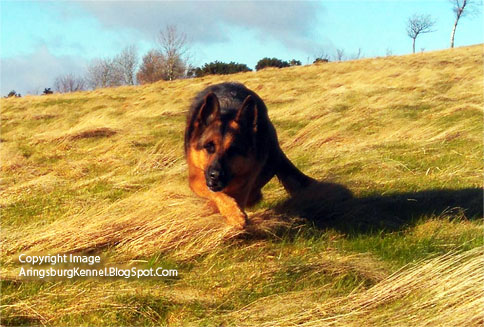Top 10 Tips on Leash Training a Puppy
Properly training your puppy is an essential part of being a good dog owner, and leash training is one of the most important goals to reach. Even if your puppy won’t leave your side, and even if they rarely leave your large, fenced-in yard, they must still learn to walk with a collar and leash. When you take your dog to the vet or the park; or if your traditional or underground dog fence is temporarily down; your dog will need to be on a leash for their own safety. Sometimes leash training can be a challenge but as with all training tasks, patience, confidence, and consistency are the keys to success. The following 10 tips will also help you while leash training your puppy.
1. Select the Right Collar and Leash
In order to properly leash train your puppy, you need to begin with the right tools. You should begin with a flat, lightweight collar and a lightweight leash. There are many different types of collars and leashes, and you will may need to purchase new, heavier ones as your puppy grows, especially if they are a large breed like a German Shepherd. However, in the beginning, the collar and leash should be as light as possible so that they are comfortable for your puppy.
2. Let Your Puppy Adjust to the Collar
Wearing a collar is a foreign concept to your puppy, so you must give them time to adjust to it before you begin training. When you fit the collar, make sure it is snug but not too tight, or it will irritate your puppy. At first, put the collar on your puppy when they are occupied with playing or eating, so they have something positive to focus on. This will draw their attention away from the new feel of the collar and help them get used to wearing it.
3. Connect the Leash to Playtime
Once your puppy has had a few different occasions to get used to wearing the collar, add the leash to it. The weight of the leash will also take some getting used to, so connect wearing the leash to positive activities like playing. Let the leash trail on the ground while you throw a ball for your puppy, for example, and they should be adequately distracted by the game of catch. Even if your puppy is contained in your yard by an electric fence for dogs or traditional fence, always supervise them while their leash is on to prevent tangling or accidental strangulation.
4. Start with Short Training Sessions
Always use short training sessions, especially at first, to avoid overwhelming or upsetting your puppy. If you are patient and allow your puppy to progress at their own pace, you’ll have much better results. Slow baby steps will create a solid foundation for walking on a leash, as forcing quick obedience never works well. If you notice your puppy getting tired, stressed, or losing interest, end the leash training session and begin again after at least a few hours of rest.
5. Utilize Treats as Encouragement
Treats are excellent encouragement, and they will help your puppy associate obedience with reward. Begin by offering your dog a treat for simply sitting next to you while you’re holding their leash. Take a few steps forward, then offer your dog another treat if they follow you at your side. Holding a treat at your side will help your dog understand where they are supposed to be. Reward good behavior with a treat; positive reinforcement is excellent for leash training.
6. Remain Calm and Positive
If your dog does not follow you properly, do not get upset or irritated. Keeping a calm, encouraging, and positive demeanor will help your dog succeed. Getting upset will only upset your dog, and it will greatly slow down their progress. Simply repeat your training exercises, and withhold treats if your puppy does not comply as expected. Never lose your temper – and this goes for all training, whether it be electronic dog fence training, house training, or any type.
7. Don’t Pull on the Collar at First
Avoid putting pressure on your puppy’s collar, because this will give them a negative feeling regarding their collar and leash. If your dog does not follow you, or if they walk too far ahead of you, do not jerk their collar or drag them into place. Simply stop, hold the treat where you want them to be, and wait for them to process the situation and realize what you want them to do. Once your puppy is leash trained, you can begin to put small amounts of pressure on the collar to get them accustomed to it, and follow up with a treat as a reward.
8. Decrease Leash Slack If Necessary
If your puppy is having trouble heeling while walking on the leash, decrease the leash slack to keep them closer to you. Again, hold a treat by your side as encouragement, and periodically give them the treat while they walk in place. Gradually increase slack as you go.
9. Be Consistent and Persistent
Another leash training tip that goes for all types of training is to be consistent. Consistency is essential for teaching your puppy proper behavior and obedience; inconsistency of method or expectations will only confuse them. Also be persistent. If your dog is not cooperating or needs a break, try again a few hours later or on the next day, and repeat.
10. Practice and Reward Regularly
Once your dog has learned how to walk on a leash, be sure to practice regularly. If you do not go on walks often, it’s important to put your dog on a leash and walk them around your backyard every so often to reinforce their skills. Continue to reward them with treats for their success, and they’ll retain the knowledge of proper leash walking and heeling.























0 comments:
Post a Comment